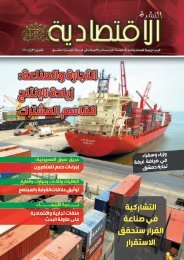SIGAR
2017-01-30qr
2017-01-30qr
Create successful ePaper yourself
Turn your PDF publications into a flip-book with our unique Google optimized e-Paper software.
<strong>SIGAR</strong> OVERSIGHT ACTIVITIES<br />
• Afghan Security Forces Capacity and Capabilities<br />
Afghanistan needs a stable security environment to prevent it from<br />
again becoming a safe haven for al-Qaeda or other terrorists. More<br />
than half of all U.S. reconstruction dollars since 2002 have gone toward<br />
building, equipping, training, and sustaining the Afghan National<br />
Defense and Security Forces (ANDSF). However, the ANDSF has not<br />
yet been capable of securing all of Afghanistan and has lost territory<br />
to the insurgency. As of August 28, 2016, USFOR-A reported that<br />
only 63.4% of the country’s districts were under Afghan government<br />
control or influence a reduction from the 72% as of November 27, 2015.<br />
Capability gaps in key areas such as intelligence, aviation, and logistics<br />
are improving, but still hinder effectiveness.<br />
• Corruption<br />
Corruption continues to be one of the most serious threats to the U.S.-<br />
funded Afghanistan reconstruction effort. Corruption has eroded state<br />
legitimacy, weakening the government’s ability to enlist popular support<br />
against the insurgency, discouraging foreign investment and economic<br />
growth, as well as seriously diminishing Afghan military capability.<br />
• Sustainability<br />
Much of the funding the United States has committed to reconstruction<br />
projects and programs risks being wasted because the Afghans<br />
cannot sustain the investment—financially or functionally—without<br />
massive, continued donor support. Donors were expected to finance<br />
approximately 69% of Afghanistan’s $6.5 billion fiscal year (FY) 1395<br />
national budget (December 22, 2015–December 21, 2016), mostly<br />
through grants. At 2016 conferences in Warsaw and Brussels, the United<br />
States and other donors pledged to maintain assistance to Afghanistan<br />
at or near current levels through 2020.<br />
• On-budget Support<br />
On-budget assistance includes direct assistance (also referred to as<br />
bilateral, government-to-government assistance) and assistance that<br />
travels through multi-donor trust funds before reaching the Afghan<br />
government. On-budget assistance is intended to reduce costs, increase<br />
Afghan government ownership, and build the Afghan institutional<br />
capacity for managing their own budget. However, on-budget assistance,<br />
whether delivered directly or through multilateral trust funds, leads to<br />
reduced U.S. control and visibility over these funds. Given the evidence<br />
that the Afghan government still cannot manage and protect these funds<br />
and may not use them appropriately, the Department of Defense is<br />
planning to reduce some of its on-budget assistance.<br />
• Counternarcotics<br />
The cultivation and trafficking of illicit drugs puts the entire U.S.<br />
investment in the reconstruction of Afghanistan at risk. Although<br />
58<br />
SPECIAL INSPECTOR GENERAL I AFGHANISTAN RECONSTRUCTION







